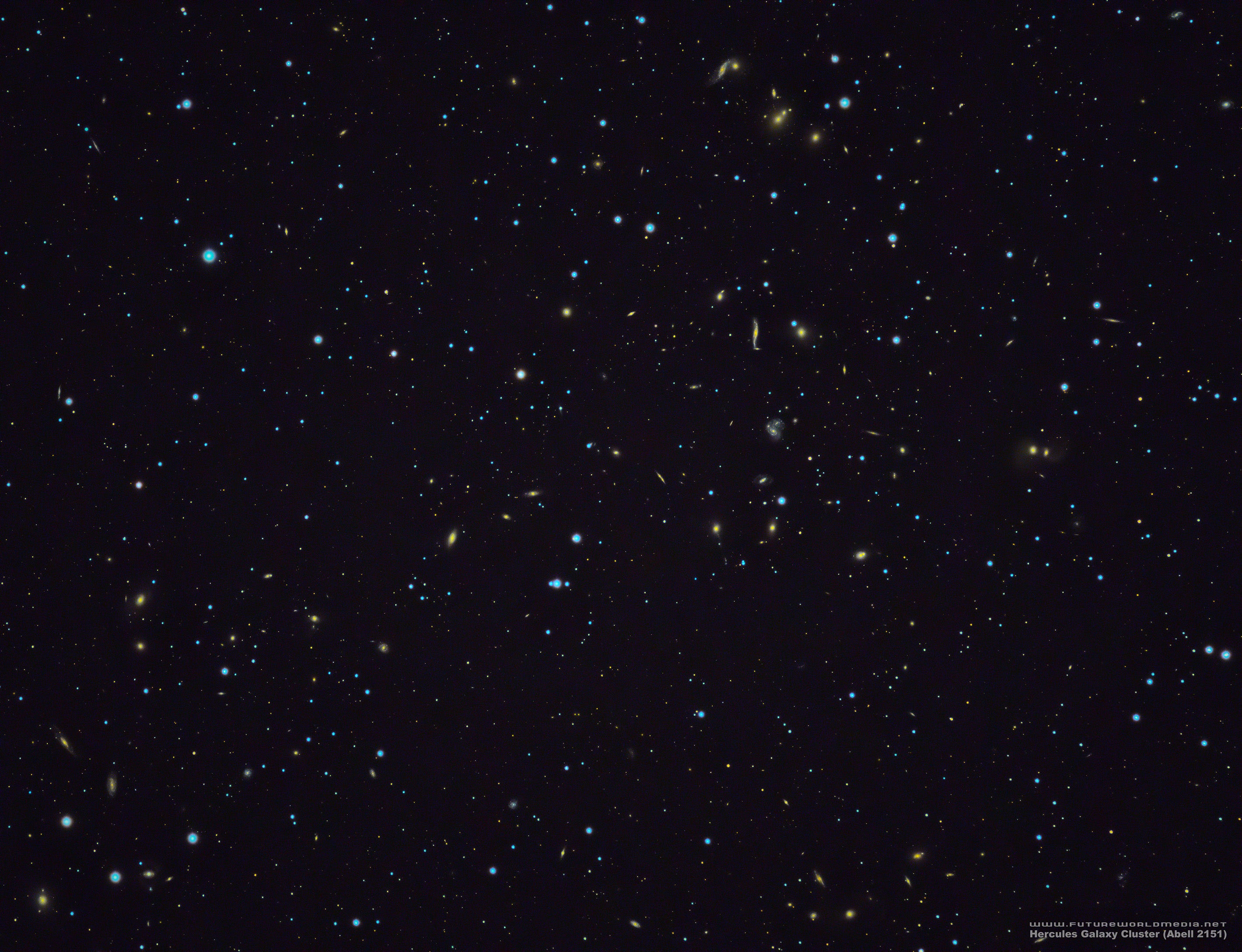
Credit: Douglas J. Struble
If your observing site is dark and you have access to at least a 14-inch telescope, do yourself a favor and target the Hercules Galaxy Cluster. Its main official designation is Abell 2151, a member of a catalog of 2,712 rich northern clusters of galaxies originally published by American astronomer George O. Abell. Later inclusions of southern clusters brought the total to 4,073. A true deep-sky object, Abell 2151 lies 500 million light-years away.
One of the coolest aspects of this cluster is that nearly half of its 200-plus members are spirals. And several of those are interacting with other members of the cluster.
If your scope has a go-to drive, target the brightest member, elliptical galaxy NGC 6047. Without go-to, locate the 5th-magnitude star Kappa (κ) Herculis. Then move 1° northwest, and your field of view should capture several dozen visible galaxies.
A finder chart is a must if you want to identify the faint patches of light. Seven of the galaxies in Abell 2151 are brighter than 14th magnitude: NGC 6047 (magnitude 13.5), NGC 6061 (13.6), IC 1194A (13.6), NGC 6055 (13.7), IC 1185 (13.9), NGC 6045 (13.9), and NGC 6056 (13.9).
The one amateur astronomers enjoy viewing the most is NGC 6045. If you look carefully at its eastern tip, you’ll find the magnitude 15.5 lenticular galaxy PGC 84720. To most observers, this combo looks like a hockey stick or the letter L, which may be normal, flipped, or reversed depending on your scope’s optics.
In addition to a large telescope, to successfully view this galaxy cluster you’ll need to use eyepieces that give magnifications of 250x and more. High powers will increase the contrast between the galaxies and the background sky. Also remember that the diameter of Abell 2151 is more than 1°. So move your field of view around to see every galaxy visible.

